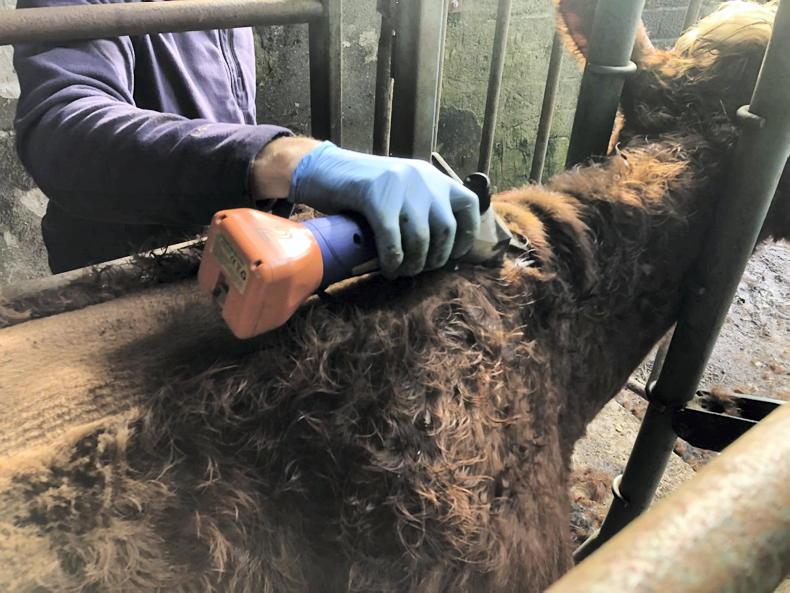There are a number of benefits of clipping the backs of cattle at housing time. Here, we take a look at some of these benefits and outline some top tips for farmers when clipping cattle.
Benefits
Clipping backs at housing time is like taking off your jacket when you come into a warm house. It allows heat to escape more easily and prevents cattle from sweating.
Cattle sheds can be very warm places for stock and even in sheds with excellent ventilation, cattle will still be considerably warmer in sheds compared with being outside.
Letting out this excess heat will make the animal more comfortable, reduce the amount of sweating it will do and therefore reduce the likelihood of that animal running a temperature or getting pneumonia.
If animals are too warm in sheds, it will reduce their feed intake. Heat loss through clipping backs can help maximise feed intake, as animals will eat more to keep their core temperature constant.
This increase in intake will boost liveweight gains during the winter period when animal thrive is usually moderate.
Clipping animals’ tails at the same time will mean they are much cleaner in the shed as there is no hair for dung to cling to.
Top tips
Clippers: A well-maintained set of clippers with a sharp set of blades is first and foremost. Be careful with electric cords that they don’t get caught around the animal and that the environment you are using them in is suitable and safe to do so.
There are now a number of cordless clippers on the market and if you are buying or upgrading yours this year, the cordless option is definitely worth considering. They are safer for the operator and easier to use.
Handling facilities: It is important to have good handling facilities for both animal and farmers' safety. A well-filled race where animals cannot be moving excessively is the best approach when clipping.
If animals have too much room, they will be constantly running forward and back, which will make clipping a lot more difficult. Some farmers will prefer to catch each animal in the crush gate for clipping.
Cutting width: Take a cutting width of about three inches either side of the animal’s spine. This is usually two to three runs of the clippers right along the back.
Make sure you clean all cut hair off the animal's back, as it can cause irritation if it is left there.
Clipping tails: When clipping tails, hold the tail by the long course hair at the very end. Clip the tail upwards towards the back end of the animal.
To clip the very end of the tail, it is easiest to bring it around and place it on the animals’ back, holding it in one hand further up and safely out of the way of the blade.
Prevent infection: Animals are going to move unexpectedly while clipping. This can lead to small cuts, usually when clipping the tail.
It is very important to have an Alamycin spray for any cuts that may be caused. Failing to treat these leaves the tail wound open to infection. This infection can then travel up the tail and into the spine, causing serious problems if not detected early enough.






 This is a subscriber-only article
This is a subscriber-only article










SHARING OPTIONS: